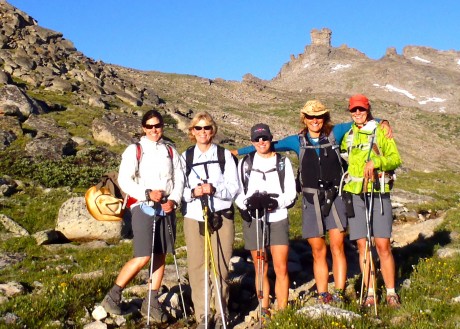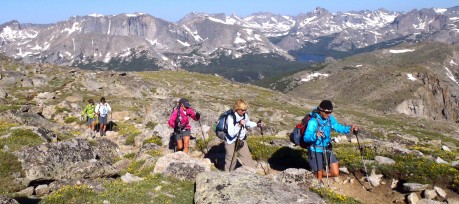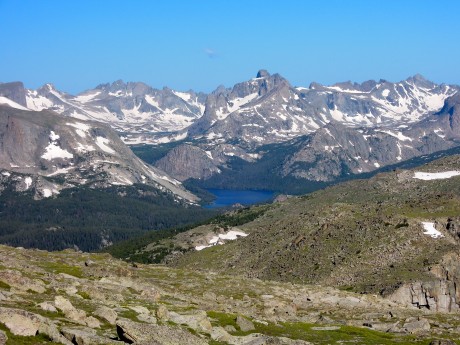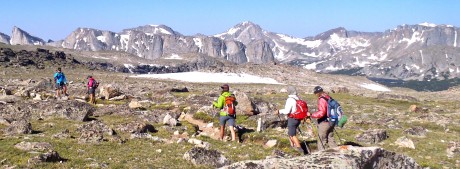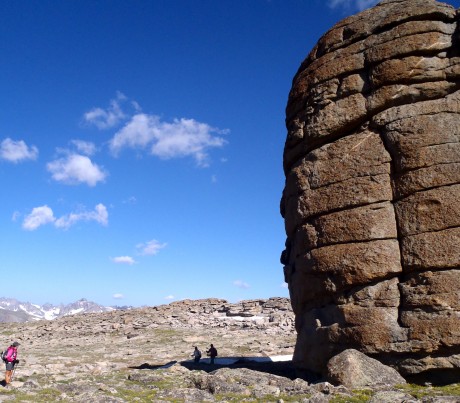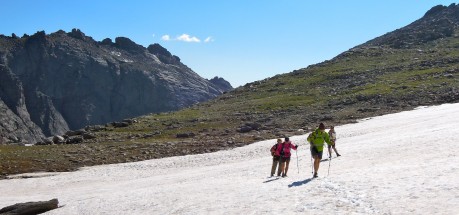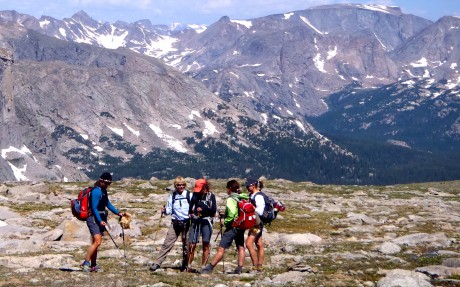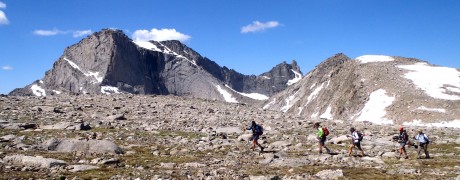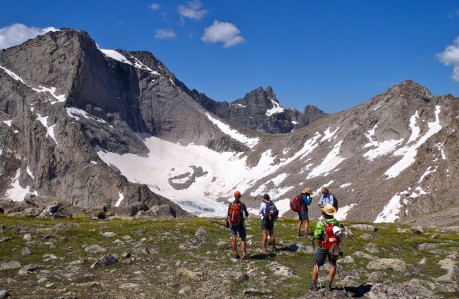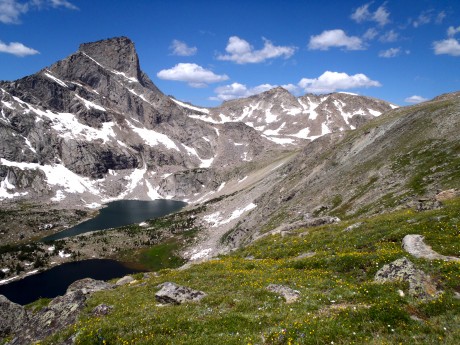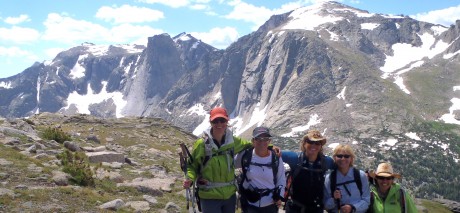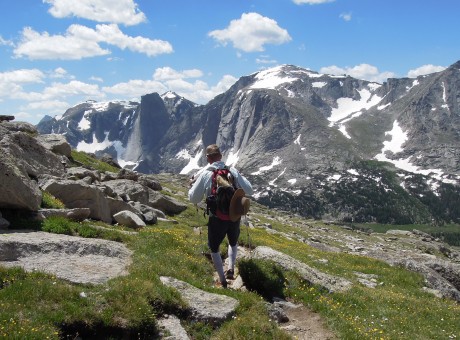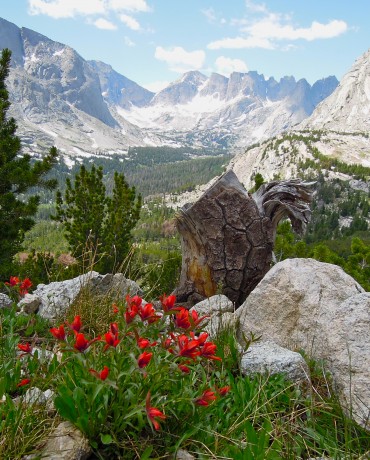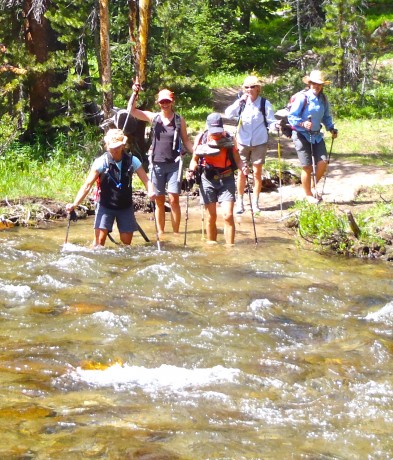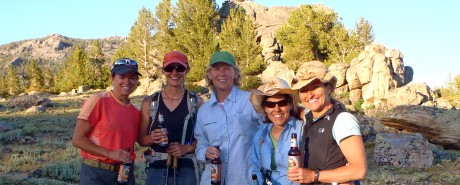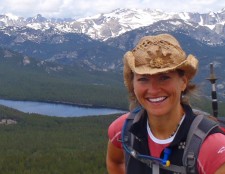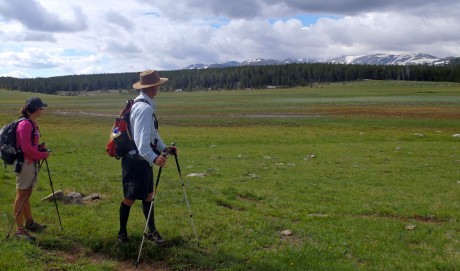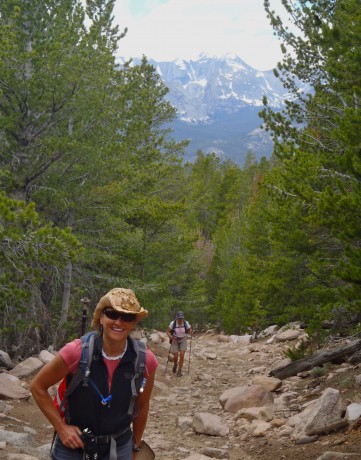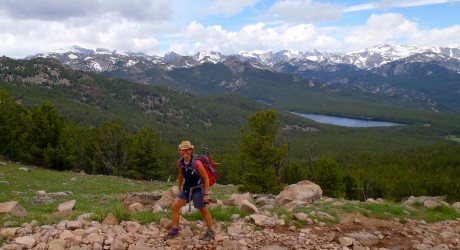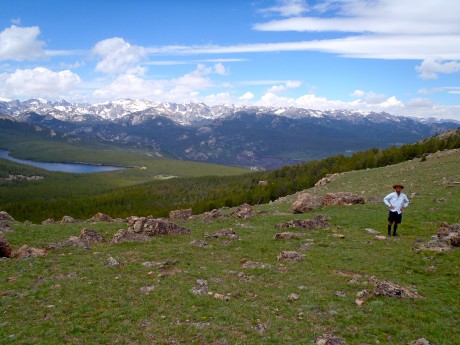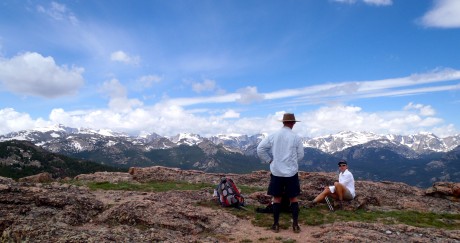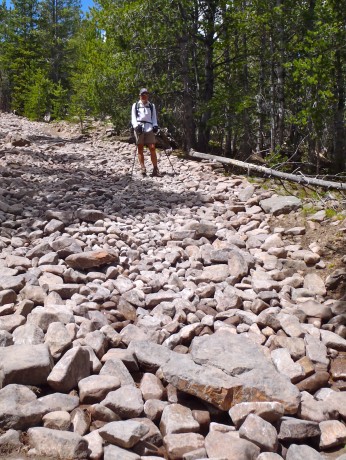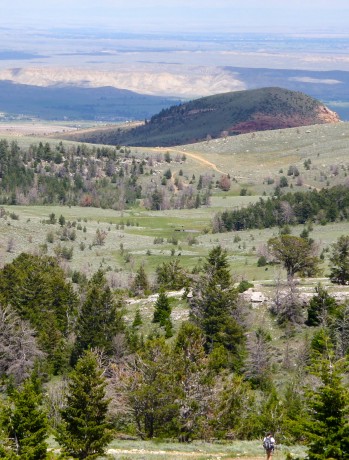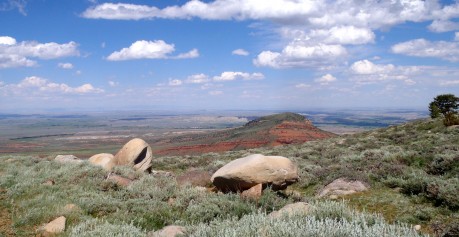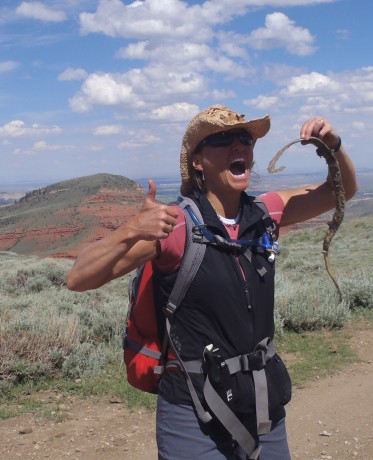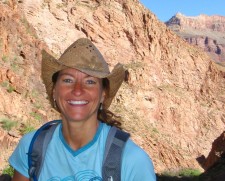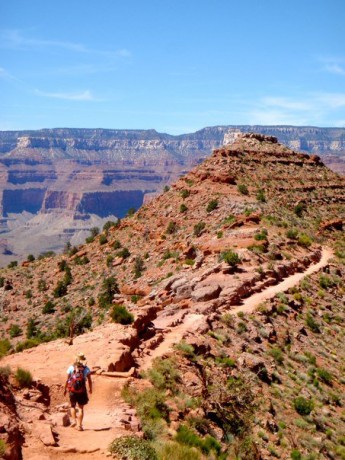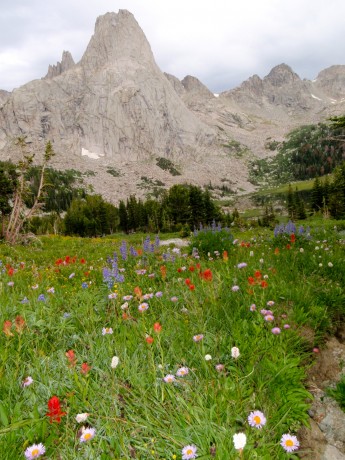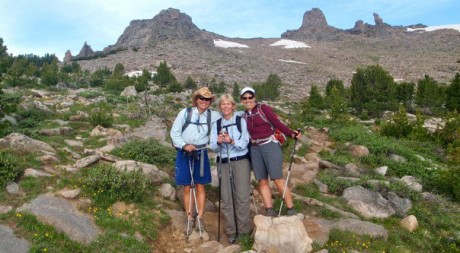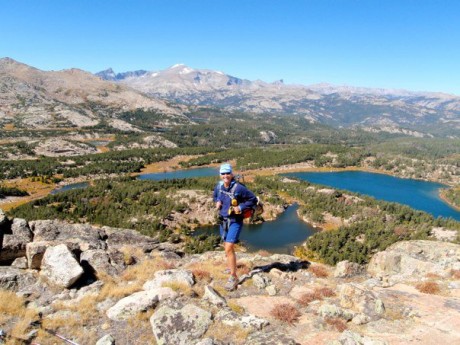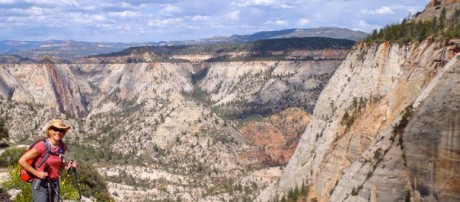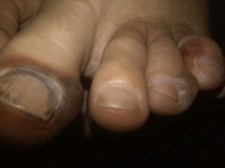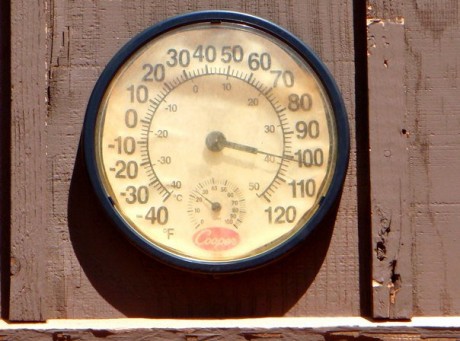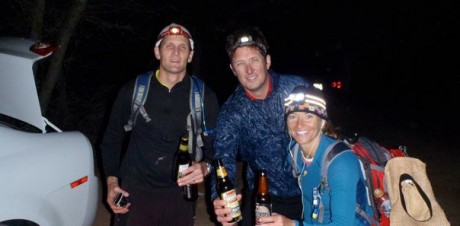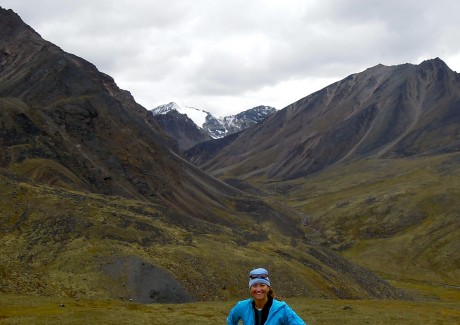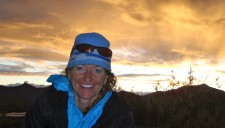
This is Post 2 in a series about my recent Alaska Brooks Range backpacking course.
It was Aug. 6, the afternoon before the start of my NOLS Brooks Range Hiking course. I was in Alaska, enjoying the comforts of the Ah, Rose Marie Bed & Breakfast, in Fairbanks, while waiting for others enrolled in the course to arrive.
As I waited to meet my course-mates, I wondered: What kind of person signs up for a Brooks Range NOLS course?
I generally love people. I get energy from people, and am inspired by people. Still, I get a little nervous before meeting new people.
We would be dropped off by the side of the road, north of the Arctic Circle, a region where evacuation is nearly impossible. We would be off the grid, and we would not be “picked up” for 12 days.
We would be “stuck,” together.
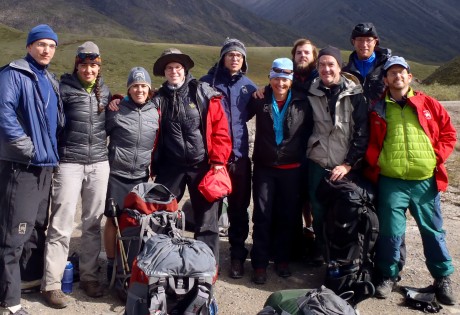
After being dropped off, and watching the van drive off, I recalled a quote by John Kauffmann in John McPhee’s Coming Into the Country: “You come to this place on its terms. You assume the risk.”
For me, part of the risk (read: scary part) of the NOLS course was setting off into The Far North with people I didn’t know.
I did not enroll in a NOLS course for the people I would meet. I enrolled in the NOLS Brooks Range Hiking course because I wanted to experience an epic place that is wild and vast and home to very few people, and to learn leadership and outdoor skills from the world’s premier teacher.
The NOLS course is not a guided tour or a vacation. It’s a lot of work. In fact, it is mostly work. The easiest part of the Brooks Range Hiking course was the hiking. When we weren’t hiking, we were setting up camp, cooking or baking, cleaning up, only to wake up again the next morning to break it all down and pack it all up and start all over again.
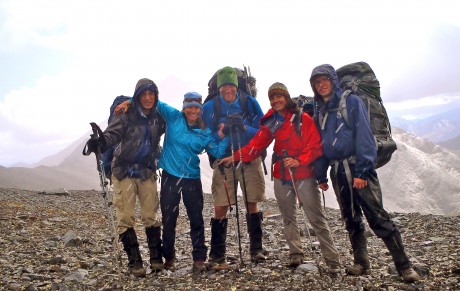
At times there was torrential rain, cold, and even snow, and steep slopes and loose rock, and sinking, squishy tundra over which to hike, or tussocks, which felt like hands coming out of the tundra and pulling/tugging your ankles down as you tried to take a hiking step, and there were deep rivers to cross.
We had to work together, which at times meant working out differences and supporting each other in a wide range of circumstances. We had to pull together in times of hardship to move the group forward. It meant being selfless.
Each of us was vulnerable during the course, and often, which meant we really got to know each other.
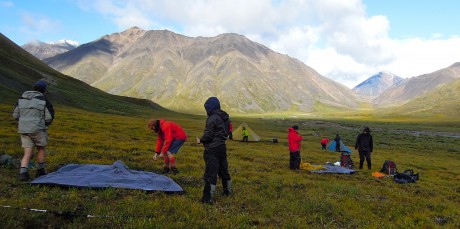
Perhaps course-mate Jon (Rosenfield) said it best, in his informal video interview, which I captured near the course’s end, when he said the Brooks Range experience meant “coming back in contact with myself, because there’s no hiding from all parts of yourself out here.”
Indeed. Each of us revealed ourselves in The Far North.
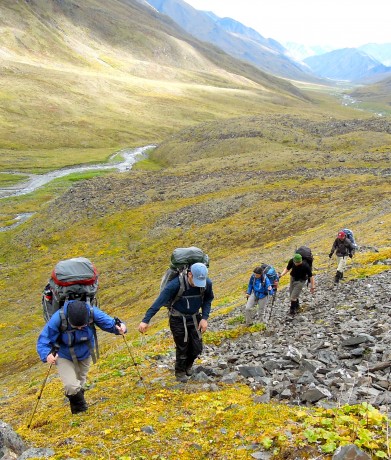
Through thick and thin, I came to love these people who were on my course.
The hardest part of the course for me was being away from, (and out of contact with) my three young sons and husband. My Brooks Range comrades – Antonia, Chris, Jon, JJ, Marc, Pat, Cutter, Lauren and Amy – were a wonderful surrogate family for me. They are not merely friends; they’ve made it all the way into my inner circle, which is saying something because before the course, I already had plenty of wonderful people in my life.
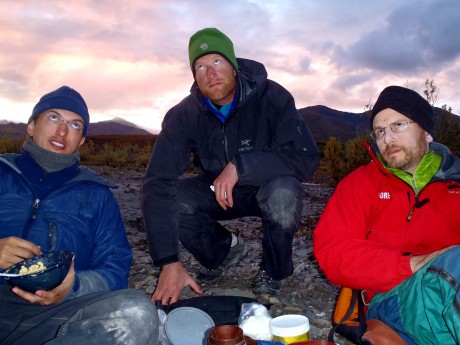
A couple of weeks before I departed Wyoming for Alaska, I went to coffee with a friend who is a former NOLS instructor and who has spent time in Alaska’s Brooks Range. She shared her photos and further whetted my appetite for the upcoming adventure. One of the things she told me, that struck me, was that the experience would change me, and that one thing I may notice upon my return will be I will have changed, but the world and people around me won’t have changed.
Sure, I changed as a result of experiencing, so intimately, Alaska’s stunning Arctic National Wildlife Refuge and Brooks Range.
But the biggest change in me was brought about by my course-mates. Because they were/are so different from me, I learned much from them, while discovering new things about myself. And in the process, we shared what was for me an unforgettable, experience of a lifetime.
The best way I can describe the way these special people changed me is to say I am better because of them.
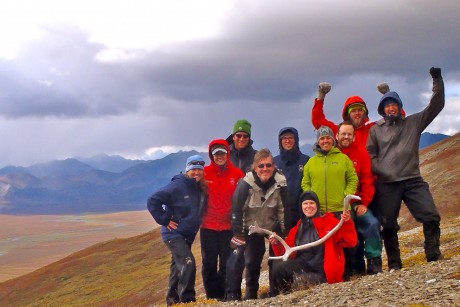
Antonia, Chris, Jon, “JJ”, Marc, Pat, Cutter, Lauren and Amy: Thank you from the bottom of my heart!
I would love to introduce you to them here:
Antonia Ruppel (or “Toni”), 32, is a native German, with a B.A., Masters and Ph.D. from Cambridge University, is a Senior Lecturer in Classics, teaching Greek, Latin and Sanskrit at Cornell University. Antonia speaks beautiful, “proper” English. I could listen to her for hours if afforded the privilege.
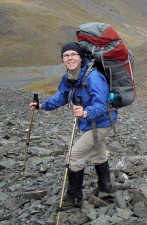
I loved having her as a tent-mate. She is the wittiest person I have ever met, and is fascinating to converse with, what with her wealth of knowledge and what is a wide range of interests. Except for our two female instructors, Antonia and I were the only women on the course. As hopefully women readers will appreciate, we girls like our girlfriends for particular types of conversations. It was a treat to retreat to the tent each night and have important – and rich – conversations with Antonia. I would share some of them but then I’d have to kill you. Yes, the conversations were that great. I have never met anyone like Antonia. She is that much of a treat. She is brilliant, charming, and I have to say it again, fantastically funny. I also loved her enthusiasm for hunting down wild blueberries, and her skills at finding (usually several) antlers on every single hike. We will remain friends forever, and I consider myself lucky as a result. 🙂
Chris Scovil, 28, is a Tax Manager at Deloitte Tax LLP, in Chicago, IL. At 6’9”, Chris was “the tall man” on the course. He is a triathlete, has an appreciation for fine food, and his passions include international relations, cooking, thoughtful conversation and the outdoors.
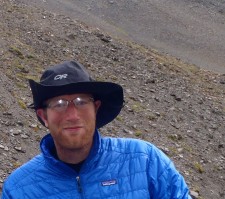
Chris’s courage on loose, exposed terrain, despite his discomfort, was an inspiration to me during the course. I was fortunate to be in Chris’ cook group, and on many days, in his hiking group, and can fondly recall many meaningful conversations we shared. Chris was often the first to start doing the “common work” that had to be done every morning and evening, even as all of us were getting soaked in a downpour. He placed a great deal of respect on goals and schedules, which I really appreciated during our course, and in my life, in general. One other thing about Chris is that he has a big vocabulary. Prior to this course I was proud of the extent of my vocabulary, but on a few occasions Chris used words I didn’t know the meaning for. A word lover, I found these instances exciting. 🙂 I would be on Chris’s team any day. He is not only really smart and driven, but also courageous, loyal and generous.
Jon Rosenfield, 42, is a Ph.D. conservation biologist for the Bay Institute in the San Francisco area. This was his fifth NOLS adventure, which to me, meant he is an expert at all things NOLS. He took me under his wing and taught me how to master the camp stove and the spice kit.
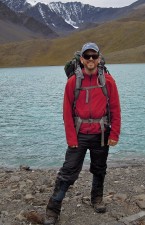
He helped me turn unspectacular entrées into spectacular entrées, such as the apricot, cashew and sunflower nut quinoa meal I made for our cook group the night before an arduous hike over a big mountain pass. Jon is engaging and smart and funny. He had many of us in stitches for long periods of time. We had many great conversations “in the kitchen” and while sharing caffeinated mud from his coffee press. Due to his many NOLS experiences and his unending good nature, it really was a gift to be on the course with him. By the end of our trip I felt like I had known Jon for most of my life. He was probably the first of my course-mates to make it into my inner circle. Which is really saying something. 🙂
Marc Morisset, 31, was born in Belgium, Brussels, but now lives in Paris, France, where he is an international sales manager. Marc is well-traveled (he has traveled to 50 countries), and after our initial conversation, I sensed he was hungry for an outdoor experience and a physical challenge.
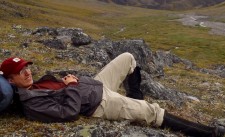
Throughout the course, I admired Marc’s quiet leadership, especially the way he would step up and lead, with conviction, when he was asked to be “on point.” I remember the day our group was crossing the Continental Divide, and Marc was asked to take point on what was a very steep, loose slope of rock sliding on top of more sliding rock. He rose to the occasion and did a phenomenal job of route finding. As someone who asks a lot of questions, I appreciated Marc’s own questions of others in his desire to learn. He was there to be challenged, and to learn, and he applied himself to the course, and to our mission, to the full extent. When I first met him my impression was that he was a very serious man, which certainly I think he is, but I also got to see a very fun, and funny side of him when we taught him how to play gin rummy, and during his telling a story about his role in playing high stakes poker. I am glad that I met Marc, and that he is among my friends.
Cutter Williams turned 27 during our course, and is from Portland, OR. He is a writer, who works as a barista at a popular coffee house. When he’s not a barista, he is working toward publishing a magazine called Cavalcade Literary Magazine. I found Cutter and I to be kindred spirits in that we both would like to, well, just walk, preferably forever, even it’s all uphill.

Introspective, Cutter was often laying in the tundra reading a novel or writing in his journal along a babbling brook. I envy Cutter’s ability to “chill.” I have three unforgettable memories that occurred on the course involving Cutter: an air ping pong game on his birthday that we played until we realized we didn’t have anyone willing to chase the ball for us, skipping rocks across the Chandalar River, and also his finishing my “Yeehaw” bear calls with his signature finish. Watch for his name in future literary works. I have a hunch that great literary things are in store for Cutter. I also hope to take him “walking” in my back yard, the Wind River Mountains, one day. I think he’d love ‘em.
Pat Kirby, 25, is an investigator for The Public Defender Service for the District of Columbia, in Washington, D. C. Two things I’m absolutely certain of after having spent time with Pat is that he is an extraordinary friend to his friends, and that his employer is lucky to have him on board. He very evidently cherishes his friends. This was obvious when he referred to them in conversation.
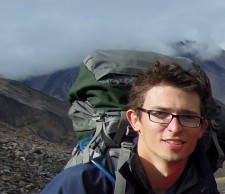
It is obvious to all around Pat that he is a man of honor and integrity, which must serve him well in his work, which he loves, including the responsibility that comes with it. Pat is a natural team player. I witnessed him many times winning consensus while leading or being on point during a hike, or even during tasks at our camp. He is a good initiator, but is also an active follower. It is evident that in all areas of his life, he is a contributor. He is someone I’d want on my team, and I would be honored to be on his. He is sometimes quiet, and so it’s an exceptional treat when he finds something really funny because his laugh is quite boisterous, and when he gets going, it’s contagious. I imagine those closest to him get to hear that a lot, and I envy them for that. 🙂
John Jostrand, or “JJ,” is 57, and is a partner in an investment management and banking firm in Chicago, IL. John is married and has two grown sons. I connected with JJ for many reasons, but initially because we are both spouses and parents and had those things in common. He was also the oldest (yet as fit as a 25-year-old) on the course, so I, the second-to-oldest, looked to him for his wisdom on all kinds of fronts. JJ (very obviously) is an effective leader.

He is enthusiastic, warm and engaging. His love for the outdoors and physical challenge was evident throughout our course. Others gravitate toward him. I was fortunate to be in JJ’s hiking group often, but a few of the experiences with JJ that I’ll never forget include the time we had a “Vista Data” break and he discovered a location at which an unfortunate dall sheep met its end. It was quite a find! JJ was also along when we “went swimming” in the Brooks Range, and again during our “rock sledding” adventure. JJ had many notable bear calls, but “Booyah!” was his signature call and I will think of him now whenever I hear that word. He also had a stash of Brazil nuts that he shared with me throughout the course. JJ is a kindred spirit. I admire him and am better for having met him.
(Instructor) Lauren Rocco, 25, is in her second year as a NOLS field instructor and recently relocated to Palmer, AK. She graduated from Dartmouth College in 2008 with a degree in Government and an interest in Computer Science. Upon graduating, she caught what she calls a “travel-exploratory bug,” and wanted to travel and learn more. In 2008-09 and 2009-10, she went to Antarctica to shovel snow and work in the carpentry shop.
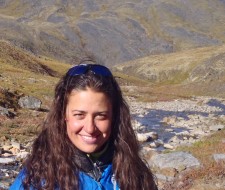
Most recently she was a teacher at a charter school in Boston, MA. Lauren is currently enrolled in an EMT course and in addition to leading NOLS courses, she would like to volunteer for the local Search and Rescue. Lauren told me that she finds instructing for NOLS is meaningful, impactful, challenging, and “it obliges everyone involved to become better human beings.” When she’s not leading a NOLS course, she’s likely learning something, constructing something, reading, cooking, programming, or going for walks and exploring. I found Lauren to be a most effective leader, engaging and sensitive to both the environment and those around her. Her love of learning and her genuine interest in others was demonstrated throughout our course. She often read poetry to us during our evening meeting. In addition to being a great leader, Lauren is a lot of fun to be around. I went swimming, “rock sledding” and played “Ninja” in the Brooks Range – all of which happened when I was in the company of Lauren.
(Instructor) Amy Davidson, 36, is a NOLS field instructor and program supervisor. She graduated from the University of California at Berkeley with a major in Linguistics and a minor in Education. She took her NOLS Instructor course in May 1999 and worked her first course that summer. Subsequently she worked one summer course per year while working in San Francisco as a creative services consultant to the advertising industry.
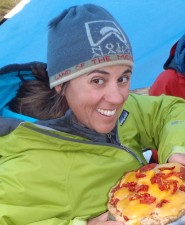
In the past two years, Amy has been a full-time NOLS employee, working in Alaska during the boreal Summer and in New Zealand during the balance of the year. Amy is smart and very funny. Her style is directive and yet engaging. As someone who wants to be a leader but can use more directive, I learned a lot on the course by watching Amy’s leadership style. She was well liked – loved – and yet has a knack for being directive and decisive. In being that way, Amy really enables her students to become more than what they otherwise would become as leaders in the outdoors. Amy is a high level leader who instills confidence in those she leads by challenging them to not be afraid to try, and even fail, and to embrace doing so in the pursuit of learning. I really enjoyed having Amy as one of our instructors and she is a great model for me.
Thanks for reading! Please check back soon for more blogging about my Brooks Range experience.
FOR MORE PHOTOS, AND VIDEOS:
The National Outdoor Leadership School is the world’s premier teacher of outdoor skills and leadership. Consider enrolling in a NOLS course. There are many to choose from, throughout the world. Or, request a catalog that provides in-depth course information.

